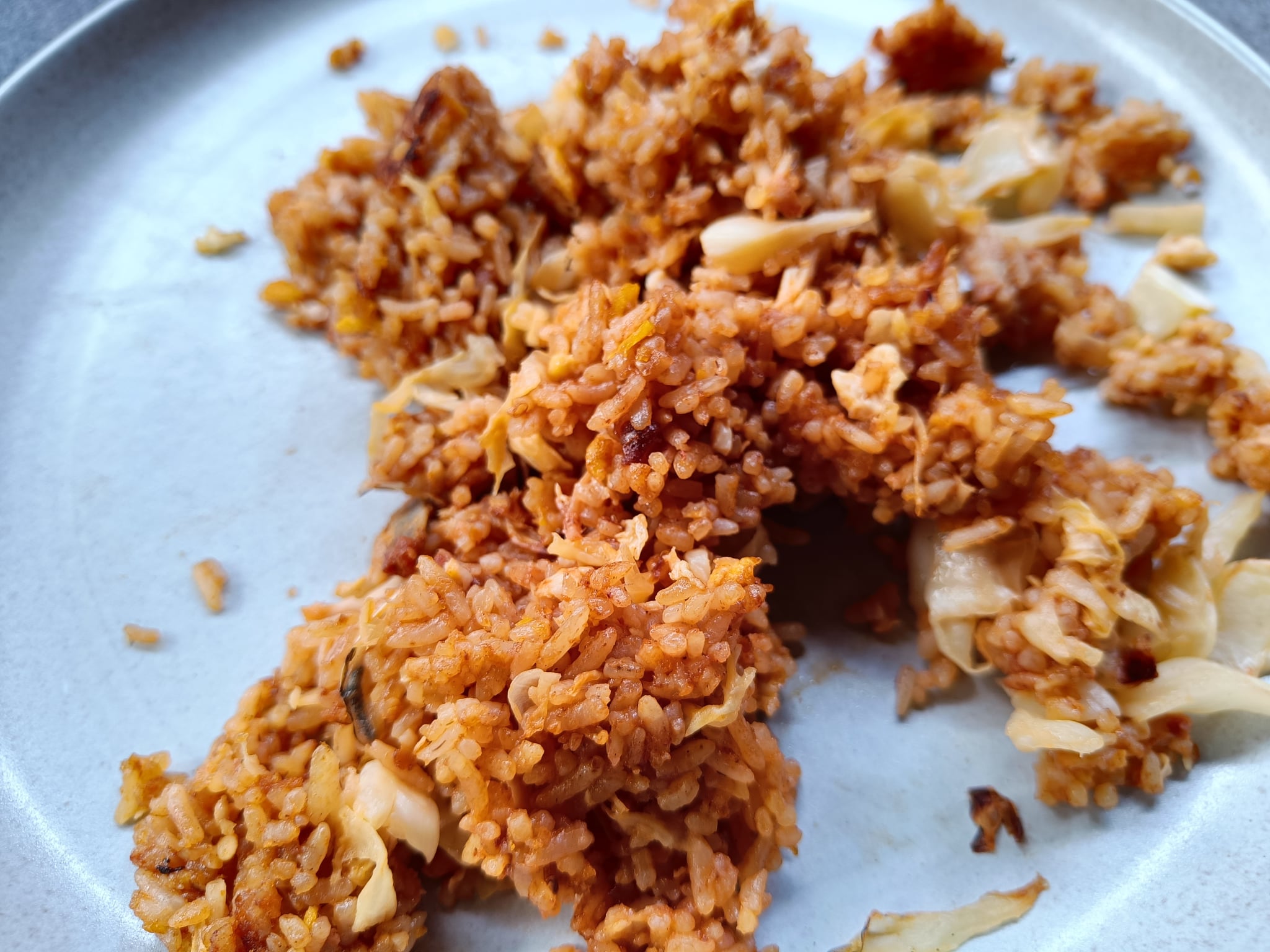In today’s episode of things you didn’t know could make you sick . . . fried rice. Yep, if you suddenly experience food poisoning after eating the delicious carb, you may have “fried rice syndrome.”
Fried rice syndrome is used to describe the potential outbreak of a bacterium called Bacillus cereus. “The term ‘fried rice syndrome’ emerged because Bacillus cereus-related food poisoning has been commonly associated with fried rice dishes,” says Shoshana Ungerleider, MD, a board-certified internal medicine physician and founder of End Well Foundation. “This connection is often due to the way fried rice is prepared and stored, because rice can be cooked and then left at room temperature for extended periods before being fried, providing an optimal environment for the bacteria to grow and produce toxins,” she explains.
That said, Bacillus cereus can grow in other foods that are not properly stored and may also be found in pasta, rice, potatoes, pastries, sushi, and cheese, says Shirin Mazumder, MD, an infectious-disease physician at Methodist Le Bonheur Healthcare. “Watch out for symptoms of food poisoning including nausea, vomiting, abdominal cramping, chills, and diarrhea,” she adds.
OK, but how can you keep your rice safe? And how often does rice food poisoning actually happen? POPSUGAR talked with experts to learn more about fried rice syndrome and how to stay healthy.
What Is Fried Rice Syndrome?
Fried rice syndrome describes the potential outbreak of Bacillus cereus, which is a spore-forming bacteria that can produce harmful toxins and cause food poisoning, Dr. Mazumder says. “There are two forms of gastrointestinal illness caused by Bacillus cereus including a vomiting or emetic syndrome, and also a diarrheal syndrome,” she explains. “Rarely, Bacillus cereus can cause a non-intestinal illness, which can affect organs outside of the gastrointestinal tract including the eyes, respiratory tract, bones, wounds, and brain.”
To break this down a bit more, outbreaks of Bacillus cereus occur when foods contaminated with the bacterium are improperly stored or prepared, Dr. Ungerleider says. “The bacteria can multiply rapidly at certain temperatures, especially in the ‘danger zone’ between 40 degrees Fahrenheit and 140 degrees Fahrenheit,” she explains. “If food items are left out for extended periods within this temperature range, the bacteria can produce toxins that once ingested lead to symptoms of food poisoning.”
OK, but why is it called fried rice syndrome in the first place? Well, rice is most commonly associated with the vomiting form of the Bacillus cereus infection, Dr. Mazumder says. “This is usually due to cooling fried rice dishes overnight at room temperature followed by reheating the next day,” she explains.
How Common Is Fried Rice Syndrome?
There are more than 60,000 cases Bacillus cereus outbreaks in the United States every year, per the Cleveland Clinic. That said, the exact prevalence of fried rice syndrome is hard to determine because many cases of food poisoning go unreported, Dr. Ungerleider says. However, due to the popularity of fried rice and sometimes lax food handling practices in restaurants and buffets, sporadic outbreaks do occur in settings where food may be left out for extended periods, she explains.
What Are the Signs of Fried Rice Syndrome?
Bacillus cereus-related illness comes in two forms, according to Dr. Ungerleider:
Intestinal: This affects the gastrointestinal system and is responsible for food poisoning, Dr. Ungerleider says. “This is characterized by symptoms such as nausea, vomiting, and in some cases, abdominal cramps and watery diarrhea,” she explains. Symptoms often appear suddenly and intensely within one to 24 hours of consuming contaminated food, but typically subside on their own within one to two days, she adds. However, individuals with compromised immune systems might experience a more severe case.
Non-intestinal: This form of illness affects other parts of the body and can lead to more serious infections in your bloodstream, eyes, or brain, Dr. Ungerleider says. Symptoms vary based on the severity, but can include eye pain, fatigue, fever, or red eye, per the Cleveland Clinic. Those with a weakened immune system or who have experienced recent injuries, surgeries, or trauma are also at a heightened risk for severe complications from non-intestinal illness and should see a doctor immediately, Dr. Ungerleider adds.
Can You Prevent Fried Rice Syndrome?
Bacillus cereus will grow in foods that are not properly stored, so when cooking rice, make sure it reaches a temperature over 140 degrees Fahrenheit, Dr. Mazumder says. “According to the USDA, bacteria grow rapidly between 40 to 140 degrees Fahrenheit, so it’s important to store food at 40 degrees Fahrenheit and throw away leftovers kept at room temperature for over two hours,” she explains.
Cooked rice may be stored in the refrigerator for three to five days and frozen for up to five months, Dr. Mazumder says. Just note that when reheating rice, it needs to reach a core temperature of at least 165 degrees Fahrenheit to kill potential bacteria, she adds.
Frequent and proper handwashing is another vital step in minimizing the risk of non-intestinal Bacillus cereus infections, Dr. Ungerleider says.
How to Treat Fried Rice Syndrome
Symptoms of fried rice syndrome can be uncomfortable, but they’re typically self-limiting and resolve within 24 hours, Dr. Ungerleider says. Just remember that it’s essential to stay hydrated, especially if you’re experiencing vomiting or diarrhea, she adds.
If symptoms are severe or prolonged, or if you’re immunocompromised, visit your doctor ASAP, Dr. Mazumder says. Antibiotic therapy is not necessary for food poisoning caused by Bacillus cereus, but IV fluids are sometimes needed if you have severe vomiting and/or diarrhea, she adds.
